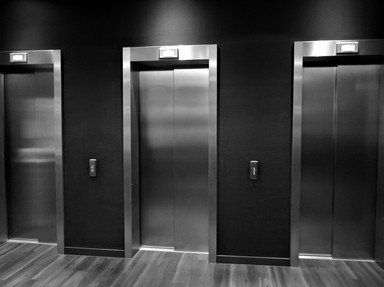Quiz Answer Key and Fun Facts
1. In 236 B.C. this Greek mathematician invented what some historians say is perhaps the very first elevator. Who was he?
2. French researchers have claimed that 4,700 years ago, long before the Greeks in 236 B.C., the ancient Egyptians utilized a hydraulic lift system elevator to build the world's very first step pyramid. What was that pyramid?
3. In ancient Rome what structure made use of 24-manually operated elevator cages, powered by 200 slaves?
4. Elevators in the Middle Ages mostly operated using hoists and hand crank systems known as what?
5. Elevator technology during the Renaissance didn't see much advancement from Medieval times dues to the still-lacking source of power other than humans or animals. However, there was one innovation at this time using what mechanical invention?
6. The Renaissance is also said to have been when the "first passenger elevator" was installed; called the "Flying Chair", King Louis the XV had it installed at what location?
7. Finally, hydraulics and electricity allowed for some serious upgrades in elevator technology when, in 1852, who created the first safety device that prevented the elevator from falling if the cable broke?
8. The first time that an elevator shaft for a passenger elevator was incorporated into the initial design of a building took place in 1853. It was part of the Cooper Union Foundation building in what city?
9. The first electric-powered passenger elevator was installed in Haughwout Department Store in New York City in 1857.
10. All these elevators are among the oldest in the USA. But which one was installed before the others?
Source: Author
Billkozy
This quiz was reviewed by FunTrivia editor
ponycargirl before going online.
Any errors found in FunTrivia content are routinely corrected through our feedback system.
